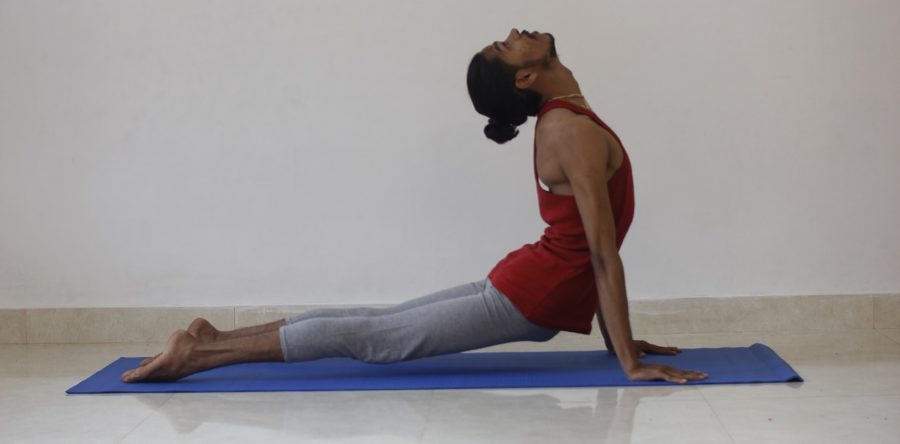Backbends open up your chest and heart centre symbolising joy, as well as the pelvic area and the throat. They improve mobility of the spine, breath capacity and reverse the aging process of the spine. A common mistake yoga students make that can cause lower back pain is to hug the knees into the chest immediately after a backbend as a relief (without being instructed to do so). Hugging your knees to the chest is a forward bend. DO NOT DO FORWARD BENDS AFTER BACKBENDS AS A RELIEF.
Why? Because muscles have memory and when you contract the back muscles in a backbend, the muscles remember the contraction. You then follow a backbend with a forward bend that stretches the back muscles and the back muscles that were remembering contraction will go into shock and spasm resulting in back pain.
Two Tips for Backbending
- In backbends the spine moves into the body and creates a backward arch. It is vital to lift the pit or bottom of the abdomen to ensure that the actions of the backbend are distributed along the length of the lower spine and do not just affect the weakest link loosening the ligaments and tendons and pinching the nerves.
- Do the hand to toe pose after backbends to prevent the back muscles spasming. This is because your spine is on the floor, and can’t go forward.
Very importantly, backbends move you from the past into the present and they make you come into the moment. If the spine drops back in the body, you can get stuck in the past. Picture an old person, hunched over, spine protruding out of the back of the body and literally viewing mainly the floor/ground as s[he] walks.
Getting back to the present, it’s June and we’re halfway through 2018. It’s a fantastic time to step back and reflect on your progress towards your goals. What’s working well? What isn’t working as you would like? And what could be done differently or better so you move towards the outcome that you want? Write down your answers. Need Support? Join my Unleash Your Purpose programme.


